|
LIFE OF
COLONEL MICHAEL EKIMOV
Michael Ekimov
(1865-1941?) belonged to westernized middle class of Old
Sanct-Peterbourg of Gottorp-Romanovs' era. His father Basily Ekimov, an
Orthodox Russian, was a successful official of the Ministry of State
Possessions. His mother, née Anna Schenken, was in Germany born
Lutheran German. Their family was big: 5 sons and 4 daughters. The
father looked for a secure career of his sons. Therefore he placed them
in various cavalry schools. One of his daughters, Maria, married Count Eugen Visconti,
an offspring of known family of architects of Sanct-Peterbourg.
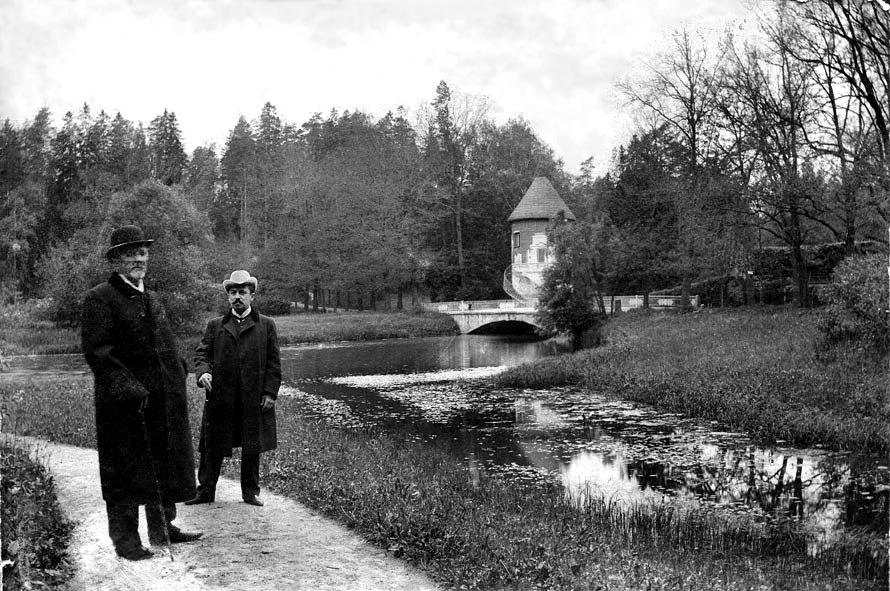
Basily Ekimov with his
son-in-law Eugen Visconti (husband of Michael's sister Maria) in
Paulovsk (Paullust).
Paulovsk
(Paullust, orig. German name by Emperor Paul I) was a place of creative work of David Visconti, an
architect and author of the Visconti's Bridge in the Park, as
well as of his brother Carlo Domenico Visconti, the author of Mausoleum
there. David was great-grandfather of Eugen Visconti, Vice-Director of
the Department of Common Affairs of the Ministry of Foreign Affairwars
in his prime.
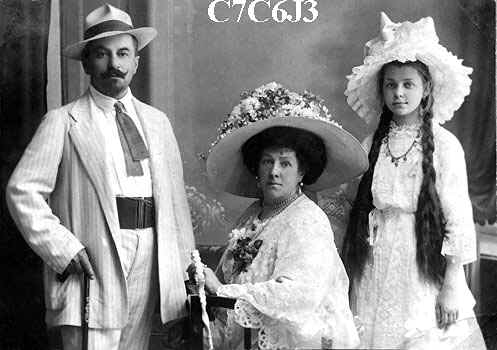
Eugen on peak of his
career with his wife Maria and adopted daughter Sanda, 1911.
Michael went a
successful way from cornet
in 1888 to colonel in 1915 (still a
lieutenant-colonel on January 1, 1915, having served first ca. 29
years at least till September 1, 1913 in the 13/5th Kargopol
dragoon regiment. Thereafter he served in the 13th Vladimir
lancers regiment with a continuation in the Red Army).
He was known as
winner of many prizes, including Emperor's prizes, in races. 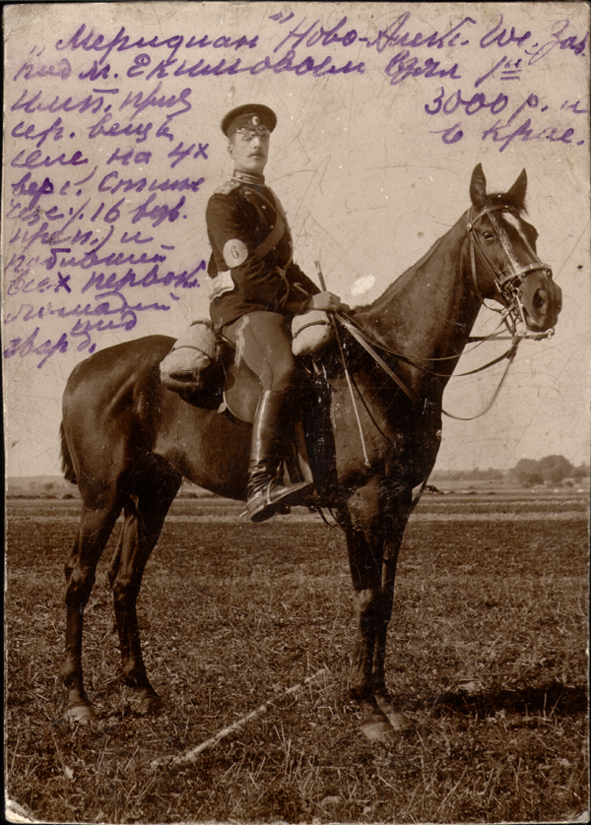
Photo von Michael mit
einer Inschrift von seinem Bruder Koka in hohem Alter getan
He was beloved by women - his father even had to rid him
(asking to order him off Sct.-Peterbourg) of dangerous
competition with Successor Nicolas Gottorp Romanov in a romance with
ballerina Matyłda Krzesińska.
His risky jokes reveal his merry and adventurous nature.
Once, when Michael and his younger brother Koka, (Konstantin
Ekimov, 1873–1956), were waiting for a train at a
railway station, there appeared a military general, who began to censure
Koka, still a cornet, having not buttoned up collar of the coat.
Koka blushed, and turned pale, and shuddered, of course. Their train
having started, through the window Michael made a long nose at the
general, who had remained on the platform.
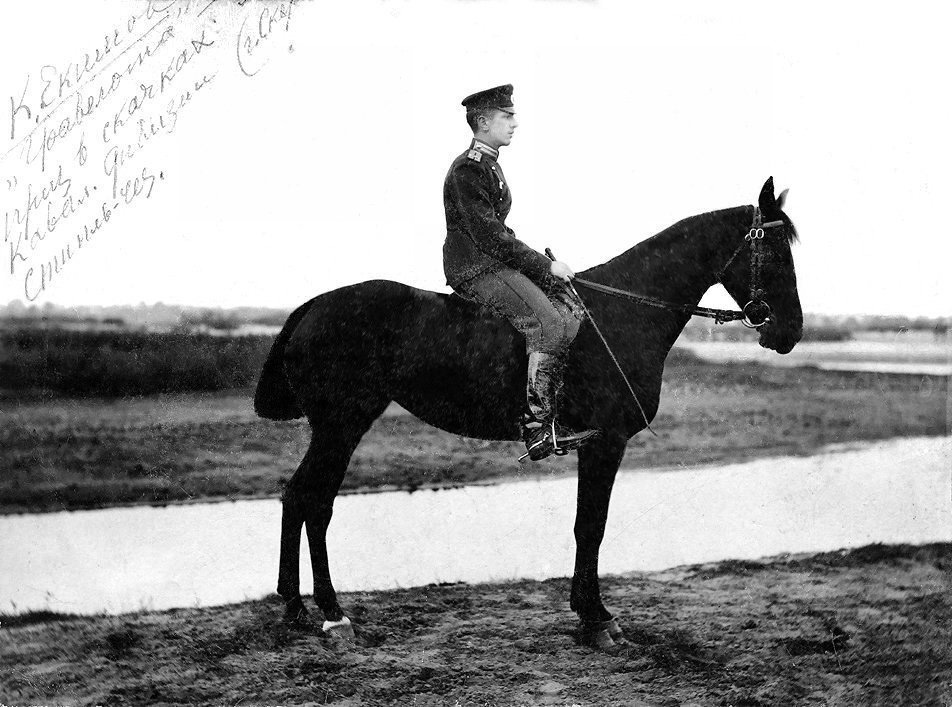
Prize of the 5th Cavalry
Division won! Koka at the beginning of his career in Poland
(Skierniewice).
Four of five
brothers once served in Poland. 
Michael, his wife Aglaida,
son Georgy and daughters Vera and Gulya on their way from Konin to Sanct-Peterbourg
When
the revolution of 1905 began, Koka had already been at his new service
at the Court Stables Department in
Sanct-Petersbourg, where he had moved together with his wife Martha,
daughter of Karl
Henkel, the Lutheran Priest of Konin, and their two small boys. 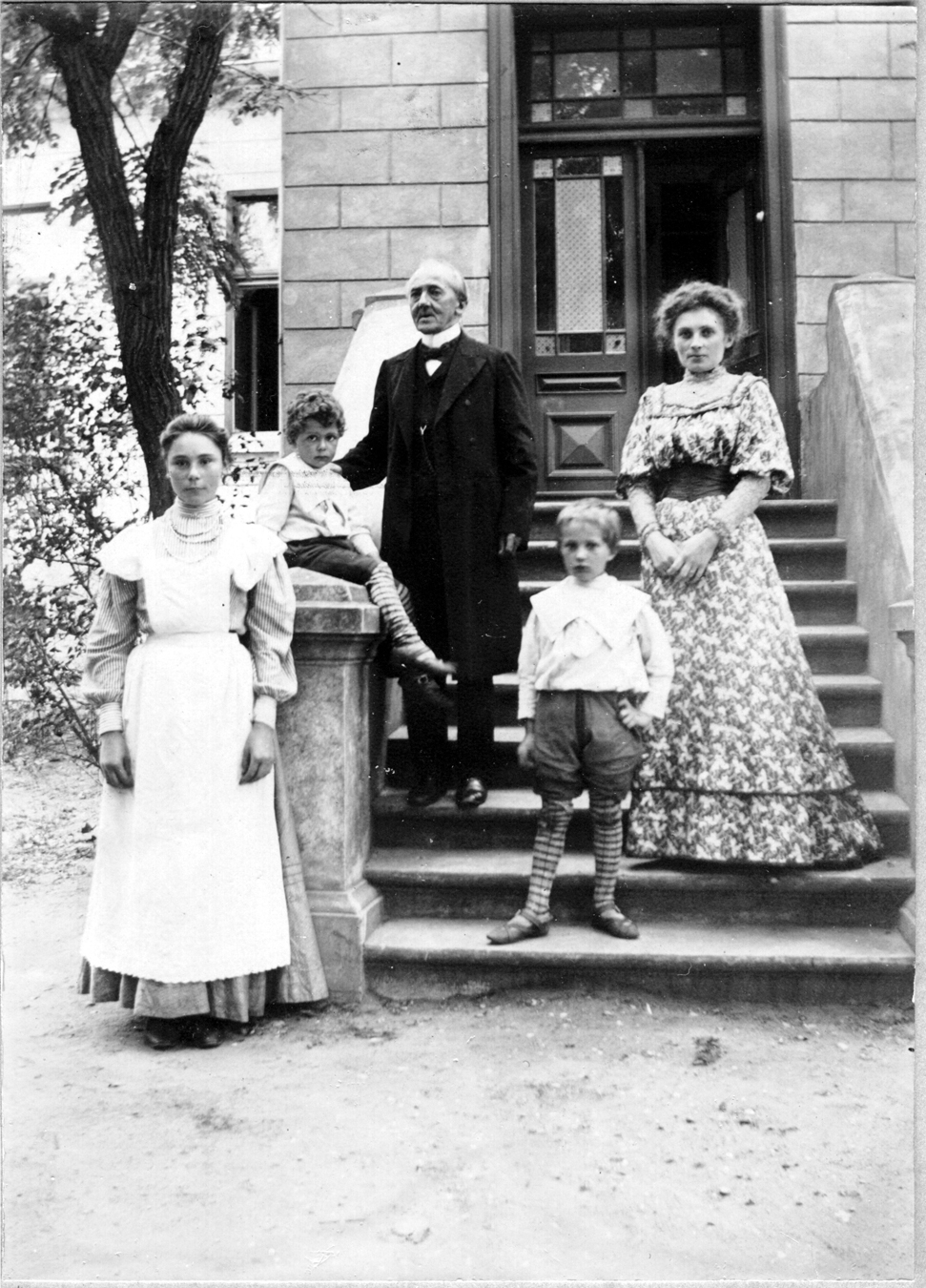
Pastor Karl Henkel, his
daughter Martha, grandsons Vladimir und Basily and maid Olga at the
entrance of the parsonage. Konin 1910.
In
Konin there remained Martha's father Karl, sisters Maria und Magdalene
(the third sister, Maria, later also moved to Sanct-Petersbourg, where
she married Konstantin Klosse,
Violinist des Maria-Theaters; however the youngest brother Karl was
engaged in Sanct-Petersburg too).
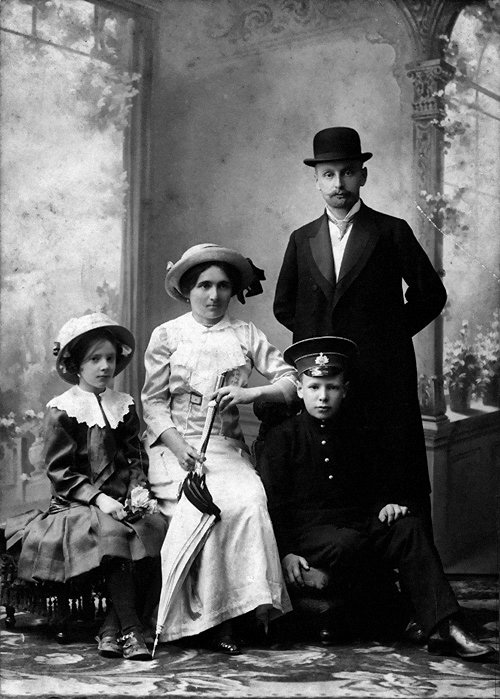
Maria née Henkel with her husband Konstantin Klosse, children Lisa
and Nicholas, Novgorod.
In
1905 Maria's and Martha's eldest brother Alexandre was
in Sosnowiec, and he wrote to his sister Maria about a revolutionary
situation there (...W Sosnowcu wszystkie fabryki stoją...Do
Sosnowca przybyło massa wojska...). However it was Michael who
almost simultaneously wrote to Koka in Sanct-Peterbourg, that his and
their brother Basily's squadrons were sent to Sosnowiec in order to
suppress disorders:
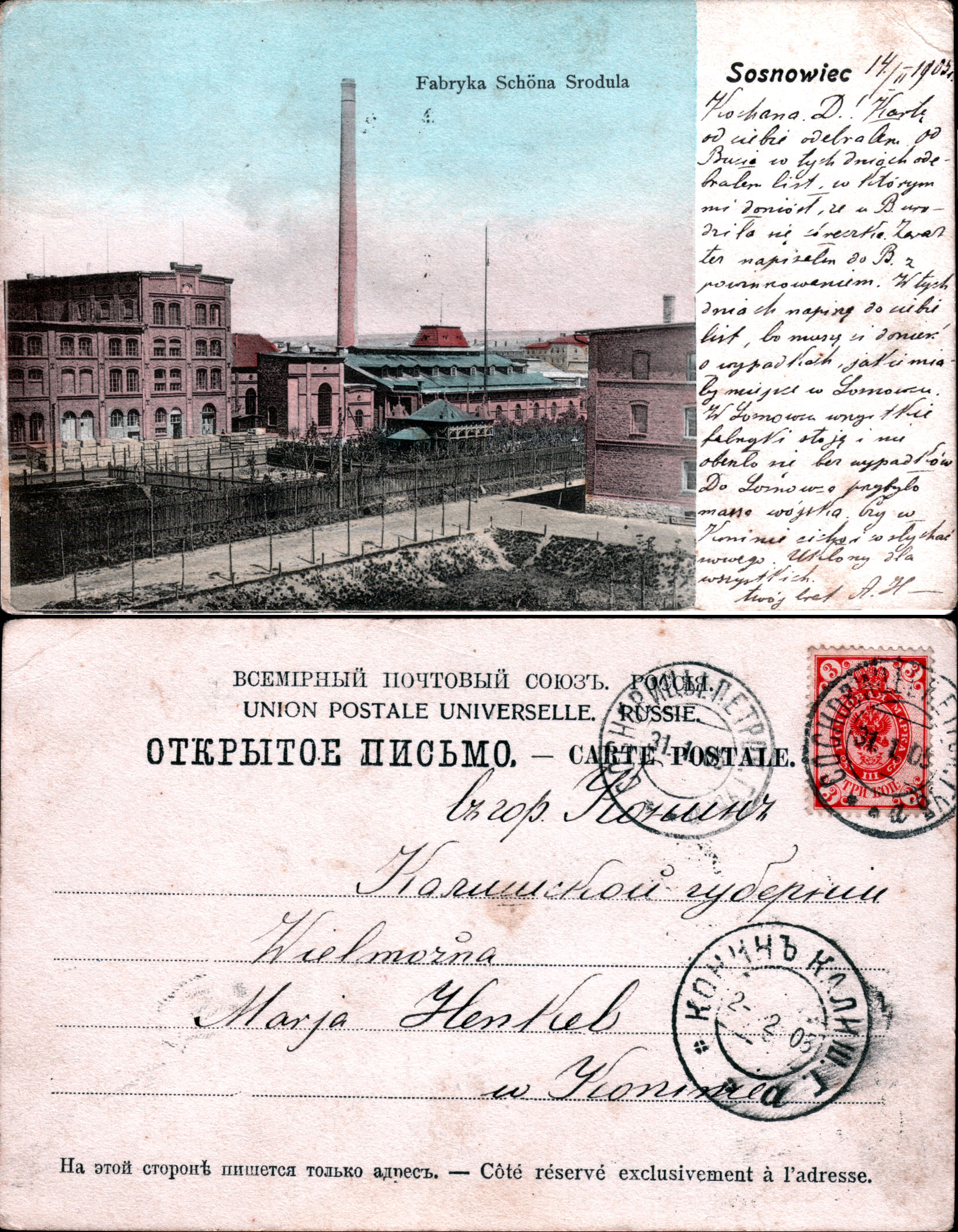
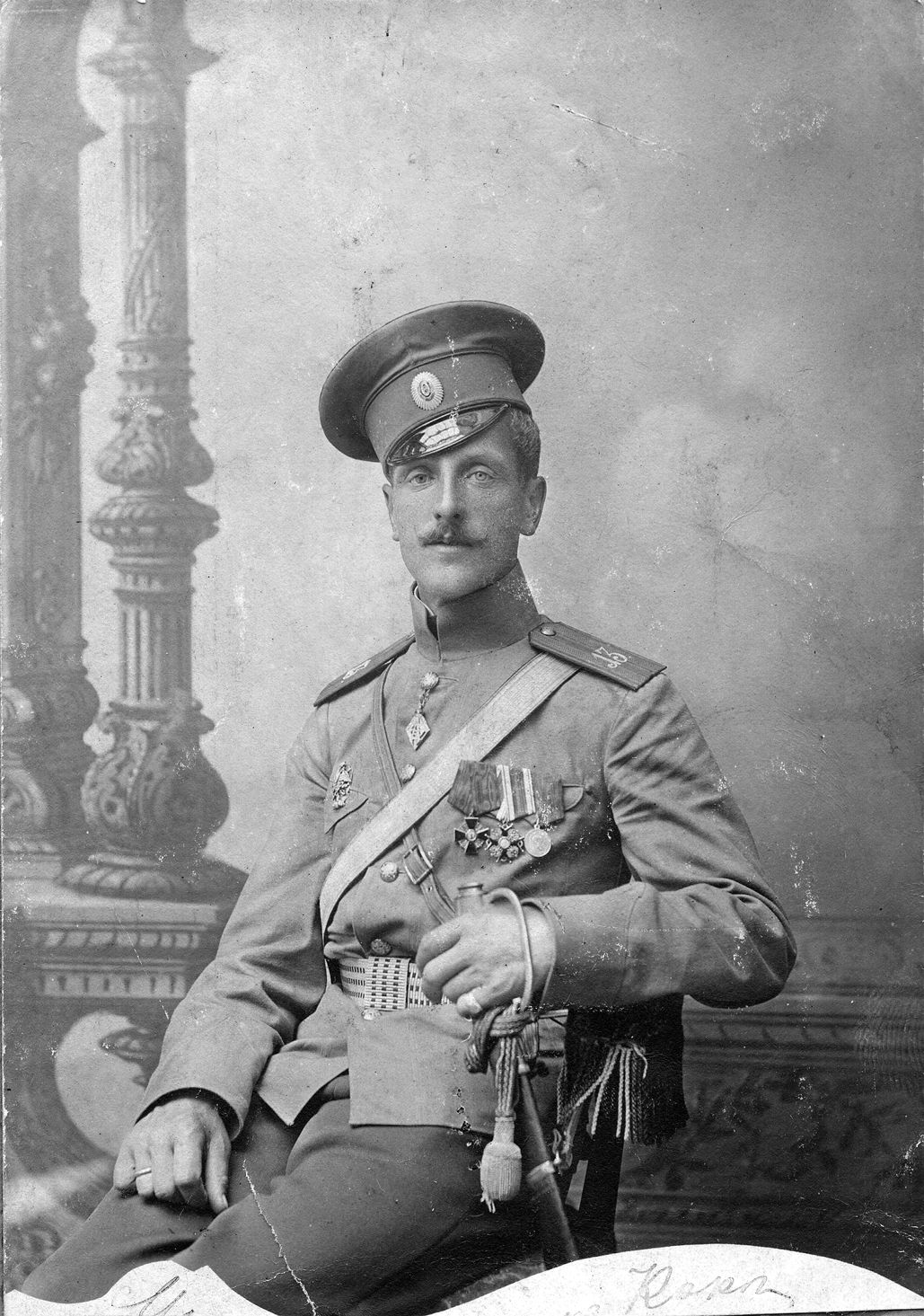
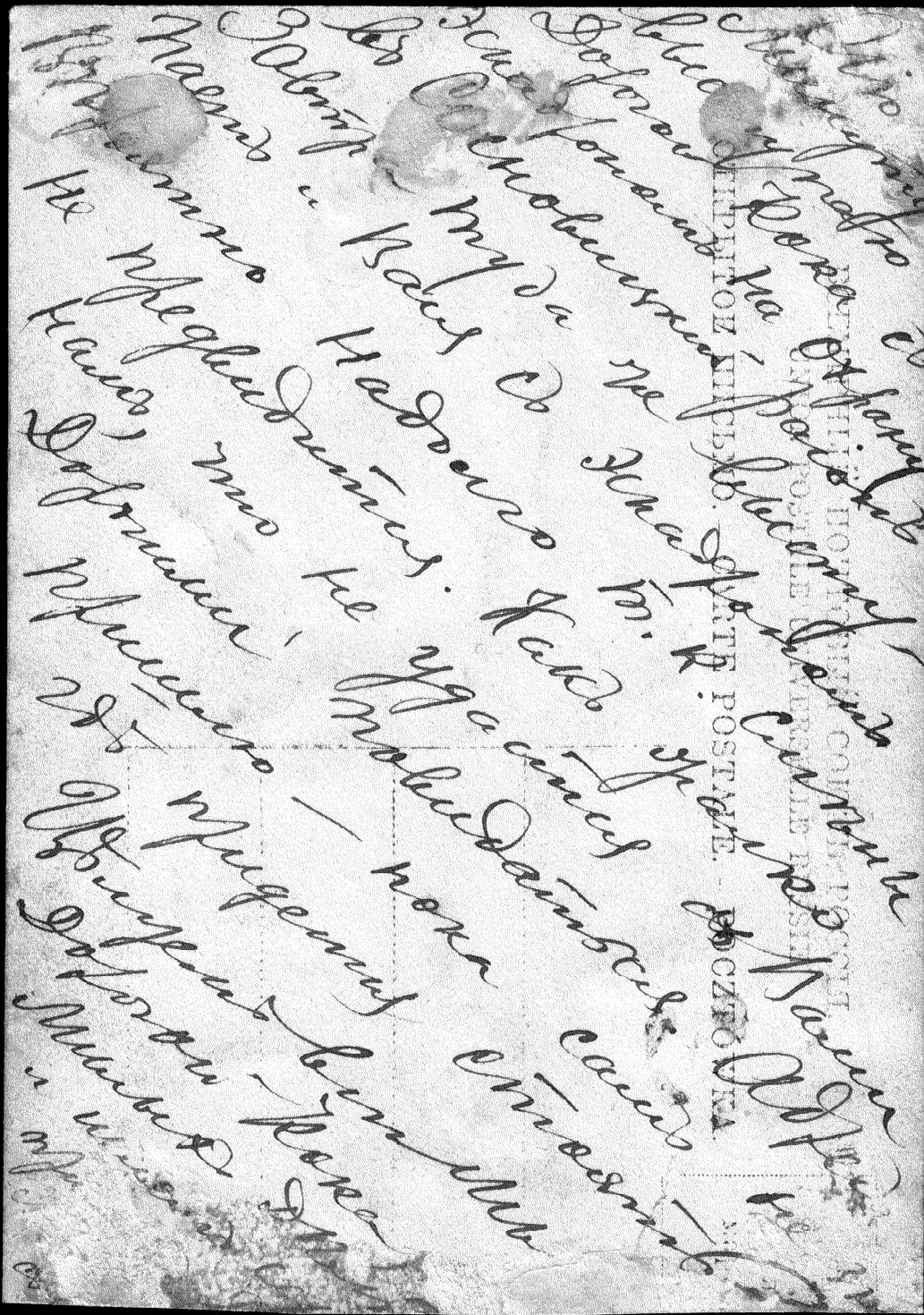
The
fate of Alexandre is unknown. Whether he became a victim of political
repressions, or whether he joined the Germans during the WWI – even
before 1914 there was silence concerning Alexandre in the family of
Henkel, so that even no one of his strongly Polonicized nephews and
nieces could say anything about him nowadays. 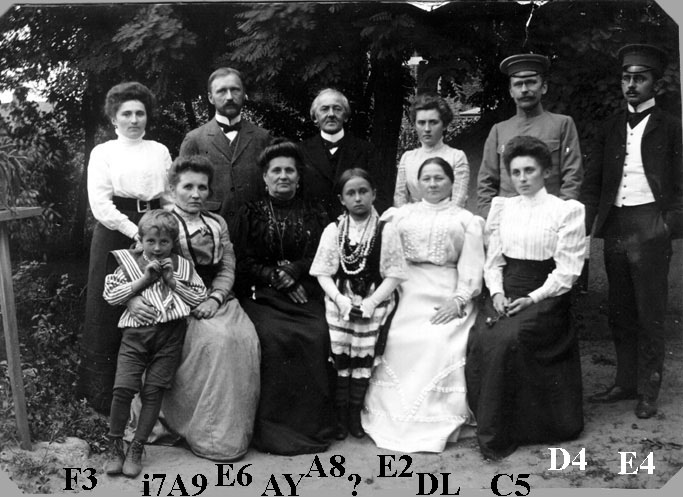
Alexandre stands on the
left between Maria and his father Karl (further to the right there are Magdalene,
Michael's brother Vasily, Karl Henkel Junior. Pastor's wife Martha sits
to the left together with her grandson Basily, daughter Martha sits the
last to the right). Konin, Pfarrhaus.
During
the World War I D5 participated in battles being a lieutenant-colonel in
the 13th Vladimir lancers regiment on January
1, 1915, but a colonel on November 19, 1915. The same grade had been
recorded on August 1, 1916.
Later he commanded the 13th
Vladimir lancers regiment for some time at the end of 1916 or somewhere
before summer 1917. Carl Gustaf Mannerheim (who himself commanded
this regiment from the beginning of 1909 till 1911) writes in his
Memoirs (London: Cassell 1953, part 4, p. 83), that after he had
received an order by Leutenant General Prince Tumanov, commander of the
13th Cavalry Division, to deffend the
town of Krasnik in Galicia from Austrians, Mannerheim's Special Guards Brigade
was reinforced by Tumanov's 1st brigade of the 13th
Vladimir lancers regiment and 13th
Dragoon regiment. Thus D5 fought under the commandment of C.G.
Mannerheim at that time.
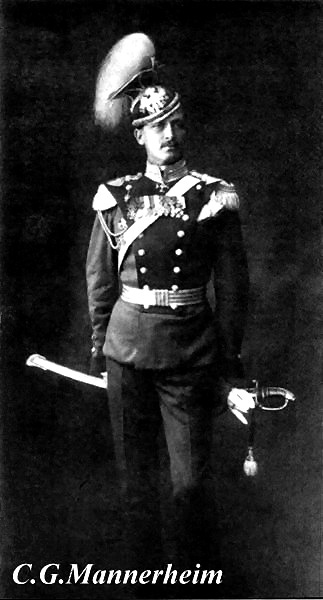
Hero who overcame
Asiatic Stalin
1918 Michael joined the Bolsheviks after his son Georgy and began his
service in the Red Army. During the following civil war he was
Inspector of Kazan Cavalry District.
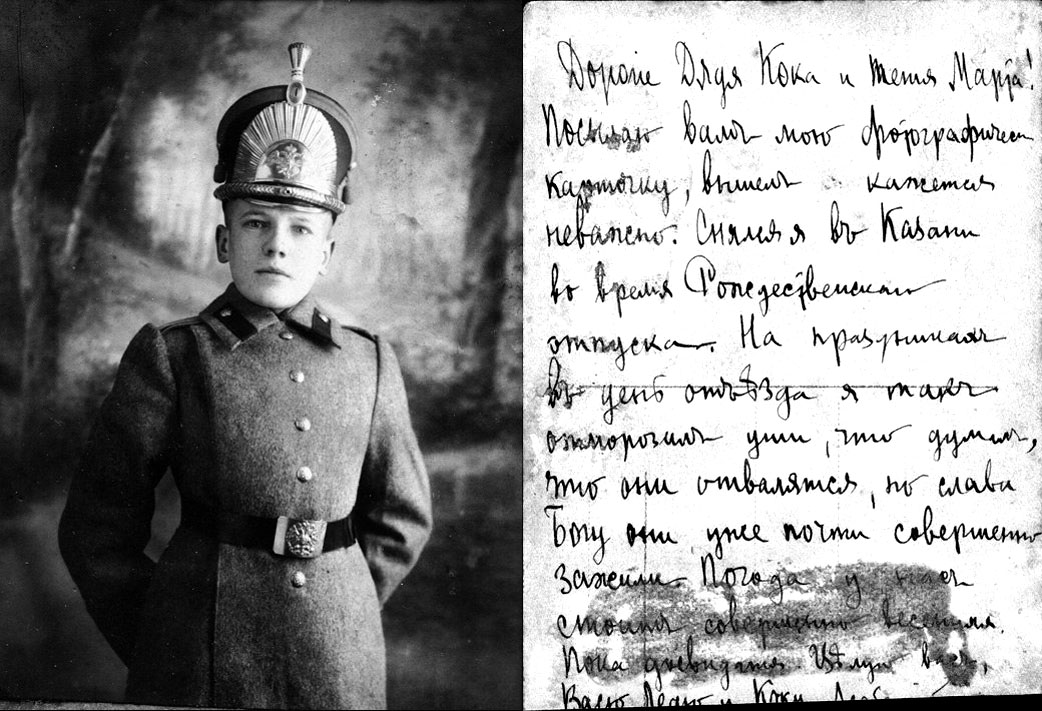
Georgy (Gorya) as a
cadet of a yunker school in Kasan (his letter to uncle Koka and aunt
Martha)
Michael should have been in Kazan on detached duty already before the
war for some time, as seen from his and Aglaida's Christmas card, sent to family Henkel in Konin at the end of
1910: 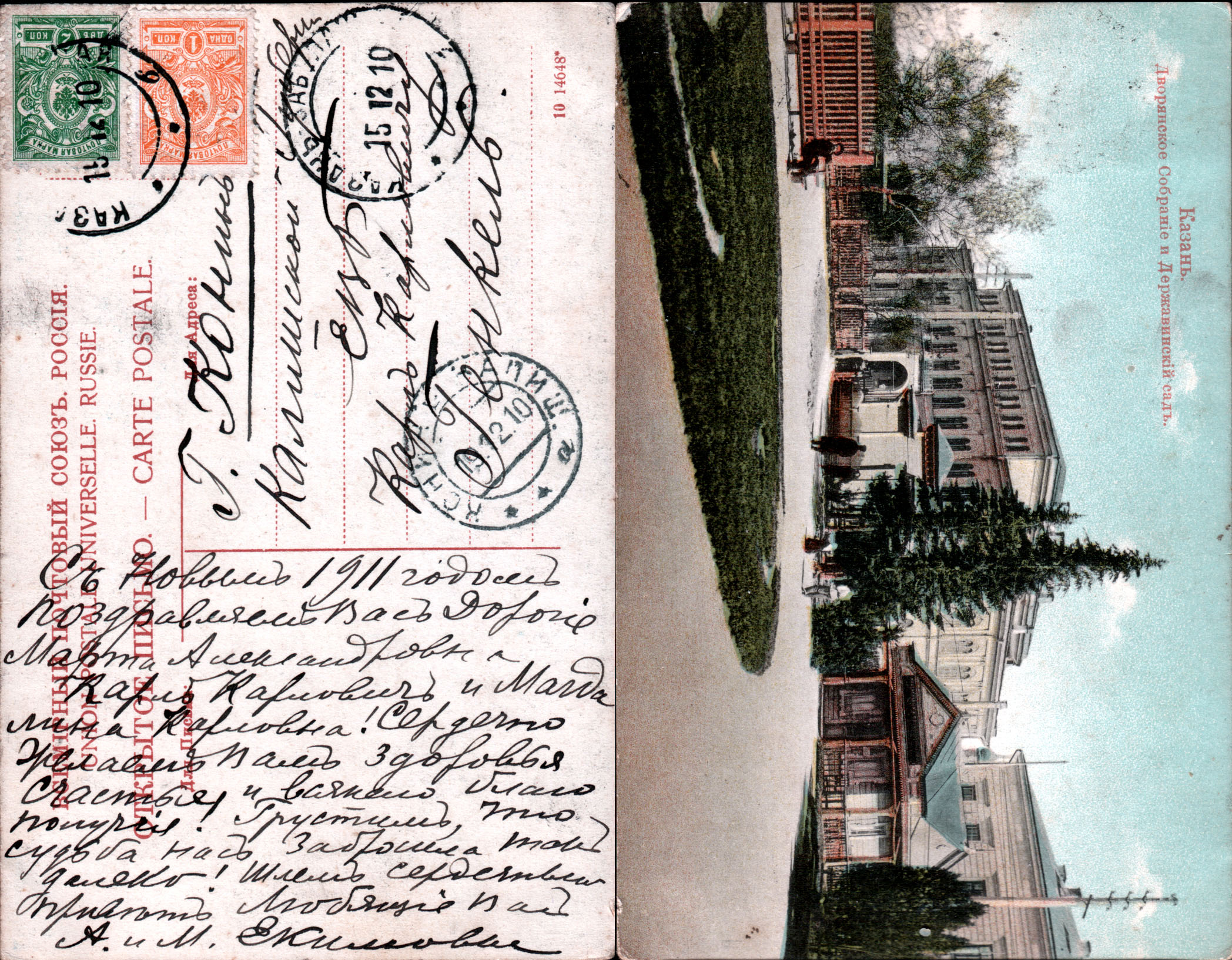
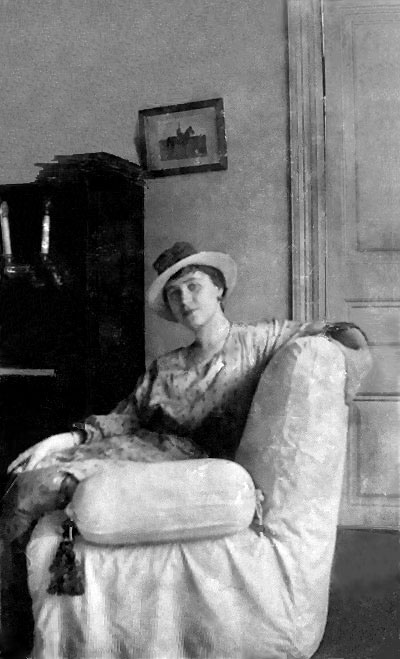
Aglaida after the 19th of November 1915
At the time of the
last fight against Wrangel in Crimea, 1920, Georgy commanded a cavalry
division at Perekop. He was killed. His remains were
brought to his father to Kazan. It was during a ball when Michael was
called out to get to know about death of his single son. He fainted.
Georgy was buried in Kazan:
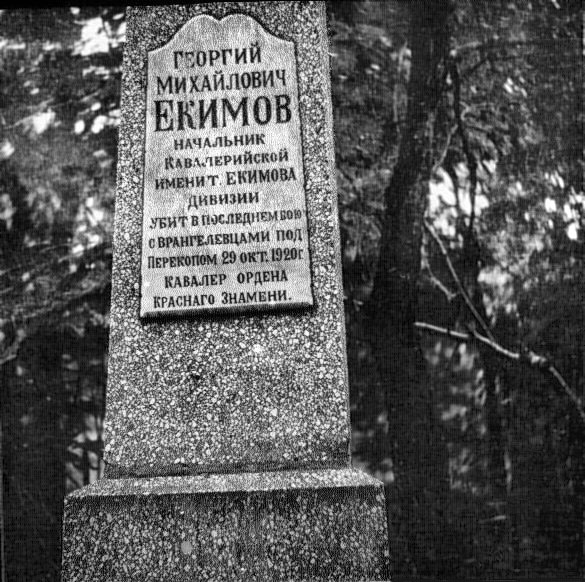
It is paradoxical that K6 contributed to the destruction of Sanctpetersbourg with his participation in struggle against General Wrangel, who was ideologist of this imperial city. Peter Wrangel (1878-1928) was a true Petersbourgian and one of those rare representatives of the elite for whom Sanctpetersbourg was not any Russian capital but the Western Metropolis of Russia. The Empire itself was not Russian but Petersbourgian. Russia was only an economic supplement to Sanct-Peterbourg. These were real ideas which Wrangel defended against revolted Russia, an alien race, not any alternative political force (as if Bolshevik). It is clear that representatives of the kin Ekimov were not westernised to such a degree to understand and adopt these ideas. Or was the last decision of
Michael to remain in Paulovsk in 1941 (see further) his repentance for his service in Bolshevik army?
Michael retired after the Civil War (this saved him from Stalin's repressions of the thirties) and was offered by Bolshevik authorities to choose for himself and his family any villa he only wanted.
He chose former villa of Constantin Rotast (1819-1902) in Paulovsk, imperial residence suburb near Sct.-Peterbourg, in a small estate park against the BIP ('Emperor Paul I's Bastion')-Fortress. He moved there together with his wife
Aglaida and his daughters Vera and Gulya.
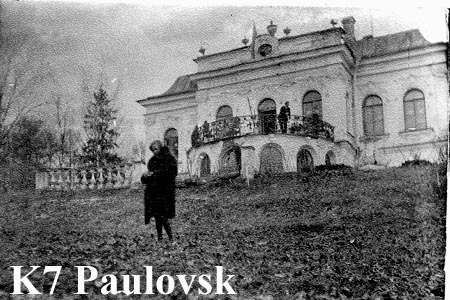
Vera at Rotast's villa in Paulovsk
Love to Paulovsk went back to his father, who occasionally rented summer "datchas" there (at least once, together with his son C4, in the site called
Novaya Ves). Later other relatives, similarly to many families and wives of servicemen officials, spent their summers in Paulovsk.
Therefore, under the Soviets in turn, gathered there various realatives
of the same old spirit:
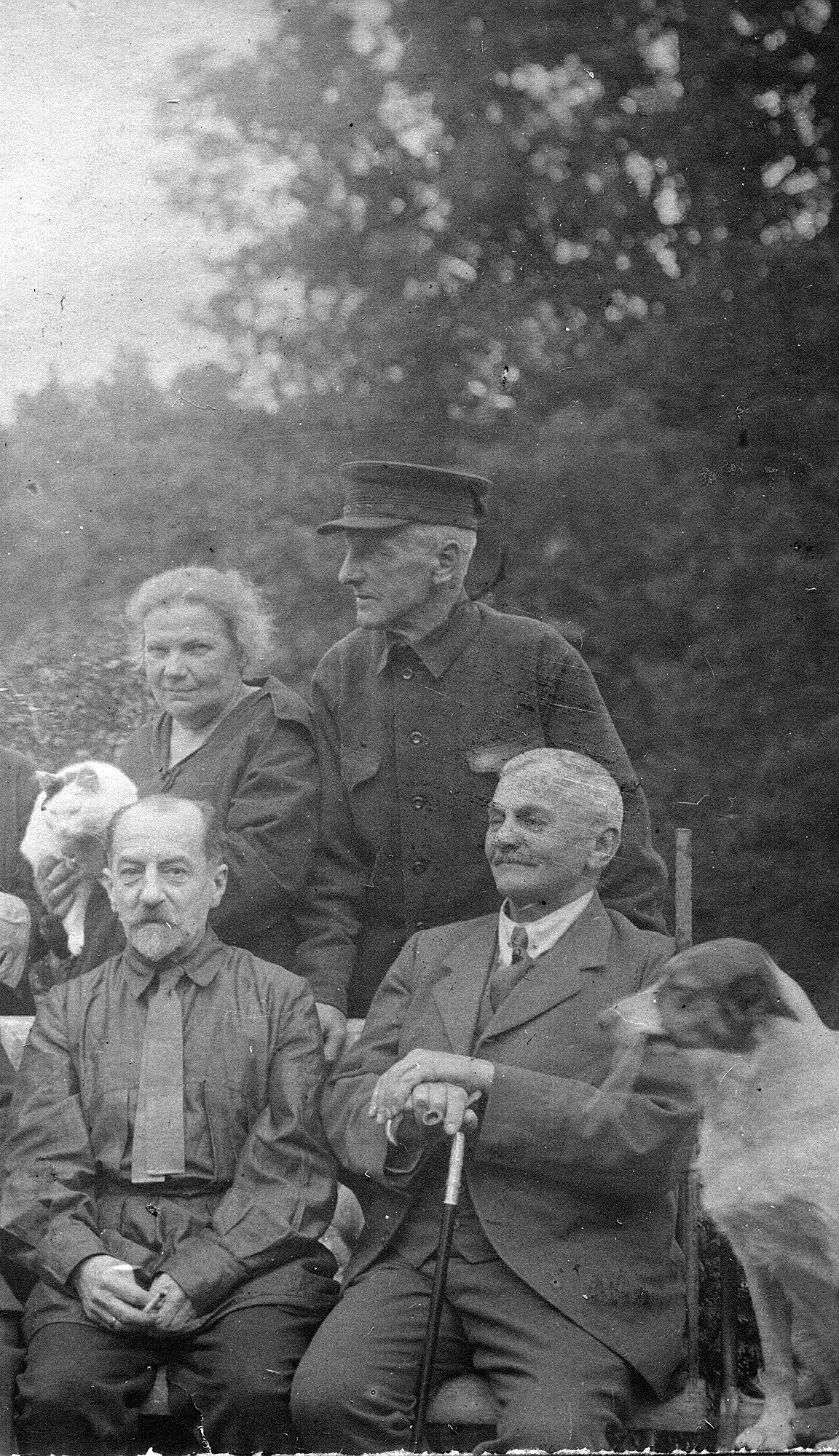
Aged guests: Eugen Visconti and once a cavalry colonel Feodore
Ekimov (the eldest among the brothers) are sitting on terrace of the villa. Aglaida and Michael are standing in behind.
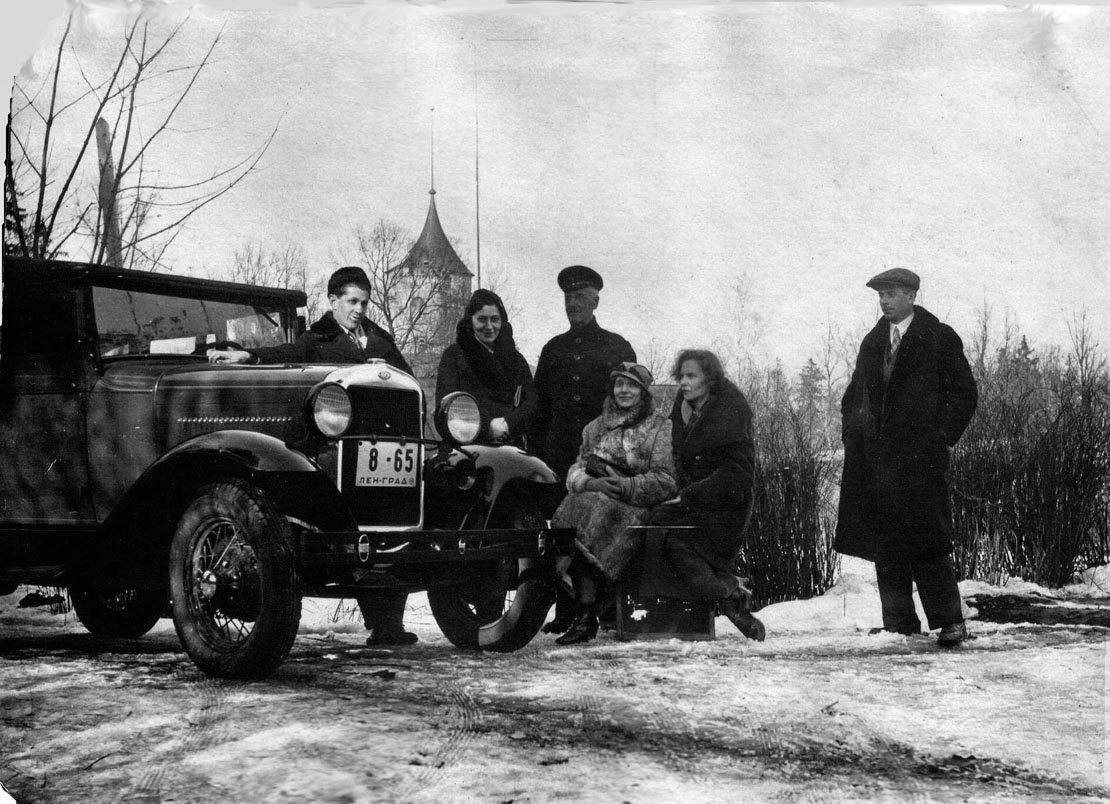
Michael (stands in Centre beside Tamara, granddaughter of his brother Feodore, Vera
sitting on the right). Rotast's Villa, the
BIP-Fortress is seen at a distance.
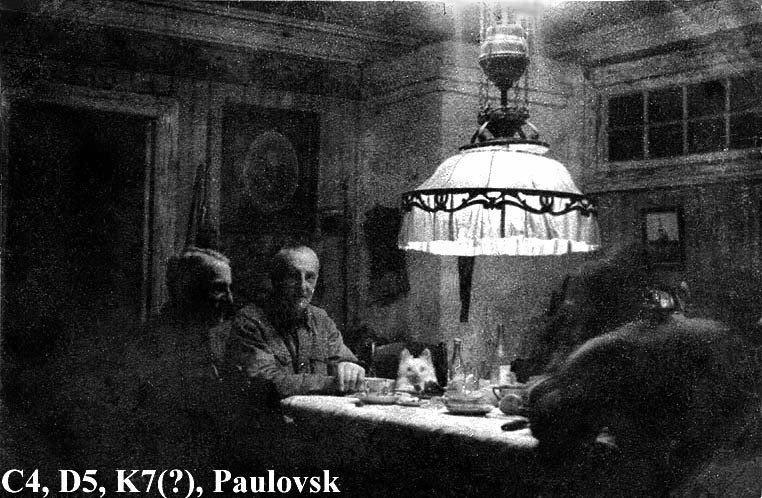
Koka, Michael and Vera in Villa (the 1st floor), 1937.
Michael and Aglaida had also a daughter Maria, the second child after
Georgy. Unfortunately, Maria died in childhood after she had drunk a whole bottle of strong medicine, left in an inappropriate place by mistake.
After the family had moved to Paulovsk, Gulia died of tuberculosis.
She left a son Leonid (Lyodia) Poznianski, future cellist, further
brought up by his aunt Vera:
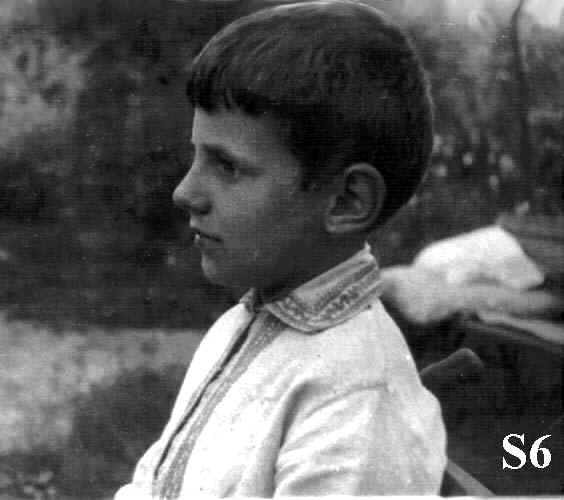
Short after the war Vera for herself died of tuberculosis. Since neither
Michael, nor his wife Aglaida lived then more, further fate of Leonid is unknown.
When World War II broke out, Vera fled to the town together with Leonid,
but Michael and Aglaida remained in Paulovsk, which was soon occupied by
Nazi German troops. The fate of Michael and Aglaida is mysterious. It
was narrated, as if headquarters of Spanish Blue Division had
been quartered in their house, but recent publications show that the
Staff of the division was quartered in another villa. Since
Michael did not want to evacuate and was a half German, it is plausible
that he deliberately remained in Paulovsk, the Germans nearing, and
hoped to find common speech with them. In any case the Russian
bolshevism, which he had understood and innerly rejected, was alien to
him even culturally and ethnically. This might have been his repentance
for his service in the Red Army. Most probably Michael and Aglaida
were shot to death as known persons who evaded evacuation, by retreating
N.K.V.D.-troops. It seems less probabale they were killed by the Nazis when
a known military officer remained to yield himself to them. Even less
probabls seems a version the old persons fled away to the West together
with the German army (unless they succeeded to get a permission to go to
Germany earlier during the occupation). In the best case they could not
inform anybody from the West after the war because they knew well what it could mean for their relatives under the bloody communist dictatorship. 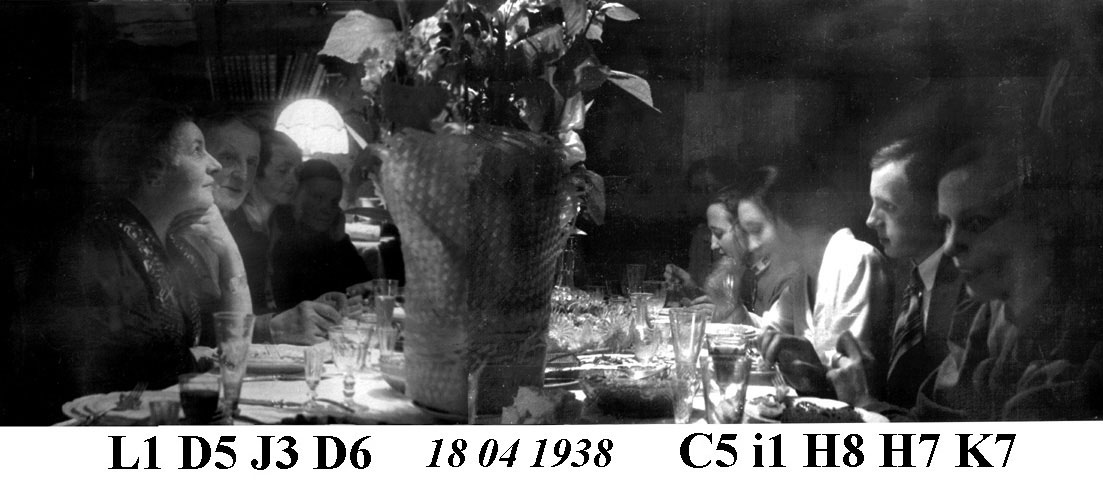
One of the last photos: on the left – Feodore Ekimov's daughter Nina
Godlewska, Michael Ekimov, Sanda Visconti,
Aglaida Ekimov; on the right – Vera, Konstantin Ekimov Junior, Tatiana Ekimov
née Tarasenko, Nedezhda Elb, Martha Ekimov née Henkel. Old Koka's flat
in Sanctpetersbourg, Konstantin's and Tatiana's Ekimov marriage
celebration,
1938.
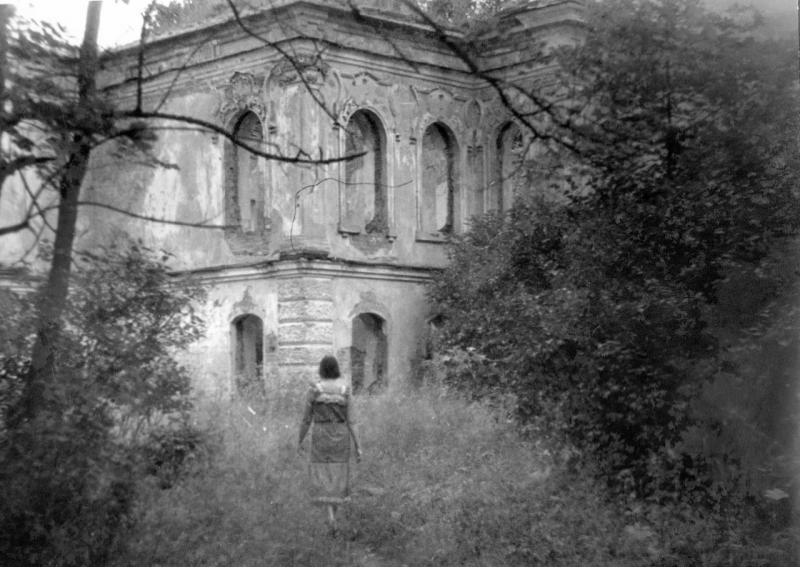
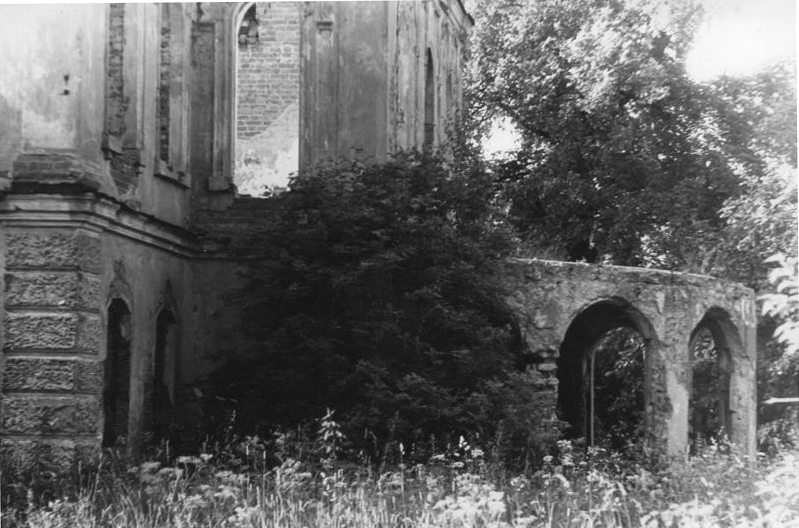
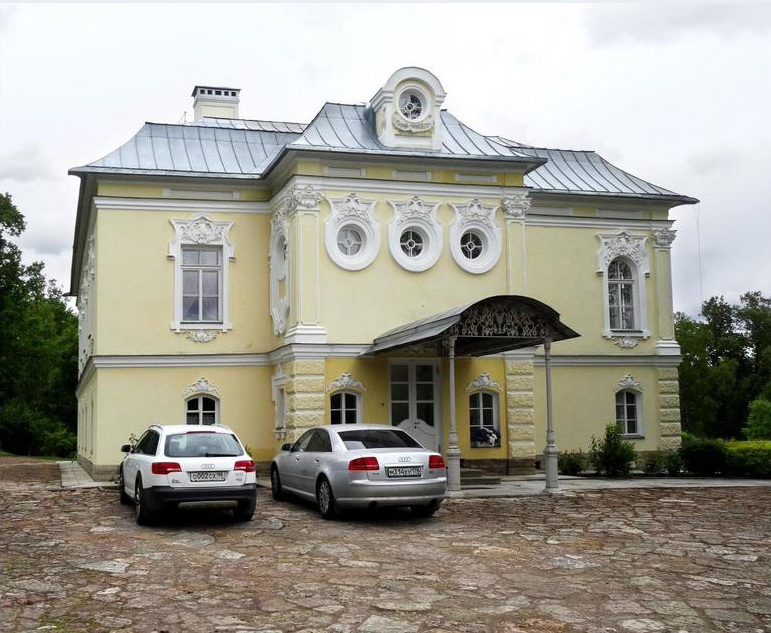
|